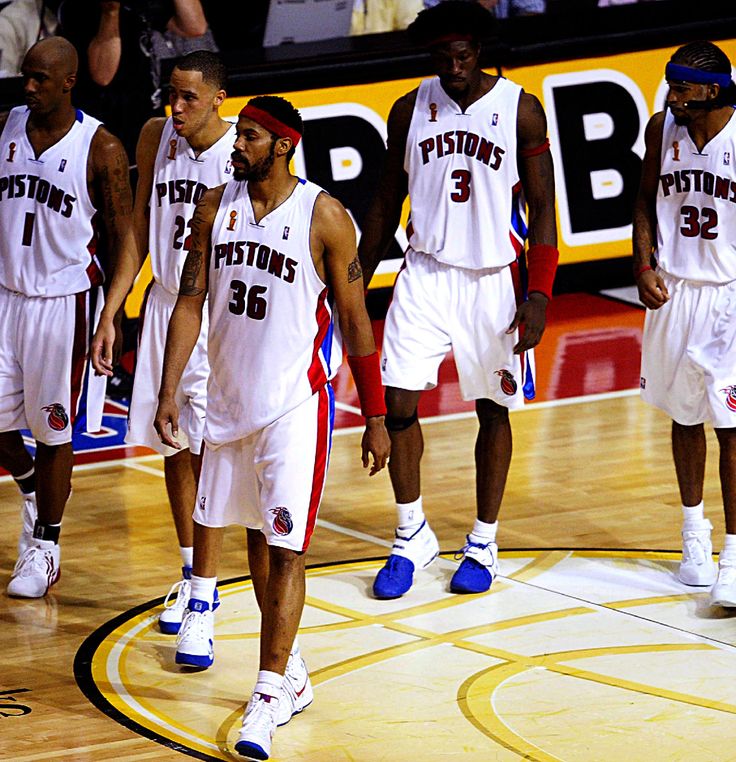Home »
Misc »
How to beat a fast basketball team
How to beat a fast basketball team
8 Keys to Attack Quickly and Score
Scoring is difficult at all levels of basketball.
Even with good players and well-considered set plays, it can be hard to score in the half court against a solid defensive team.
This is even more true at the youth, middle school, and high school levels.
To avoid long scoring droughts, all coaches should emphasize fast break basketball.
The concept of the fast break is simple:
Pushing the ball down the floor to earn a numbers advantage, making it easier to score before the defense gets set up.
Consistently converting on fast break opportunities is a challenge and must be a daily emphasis in your practices to be done well.
Why the Fast Break is ImportantThere are several reasons why it's important to utilize the fast break:
a. Never allows the defense to rest
Playing fast break basketball is crucial because it never gives your opposition a chance to slow down and catch their breath.![]()
Teams who constantly push the ball every chance they get will wear out the defense and force them to make defensive mistakes.
b. Transition defense is HARD!
Don't you agree?
Teams who choose to walk the ball down the court do not exploit this potential weakness of their opponents.
c. You will have poor shooting nights
Generating fast break layups is one way to win even on those games when your jump shots aren’t falling.
If you always rely on your team shooting a high percentage, that will be many games where you'll be disappointed.
Great teams expect to score a high percentage of their points before the defense is organized.
d. Better utilize the bench
For youth and middle school teams, all players should get significant playing time.
At the high school level, it is important to develop some underclassman bench players as well.
By playing fast, there will be more possessions and more opportunities to use your full roster.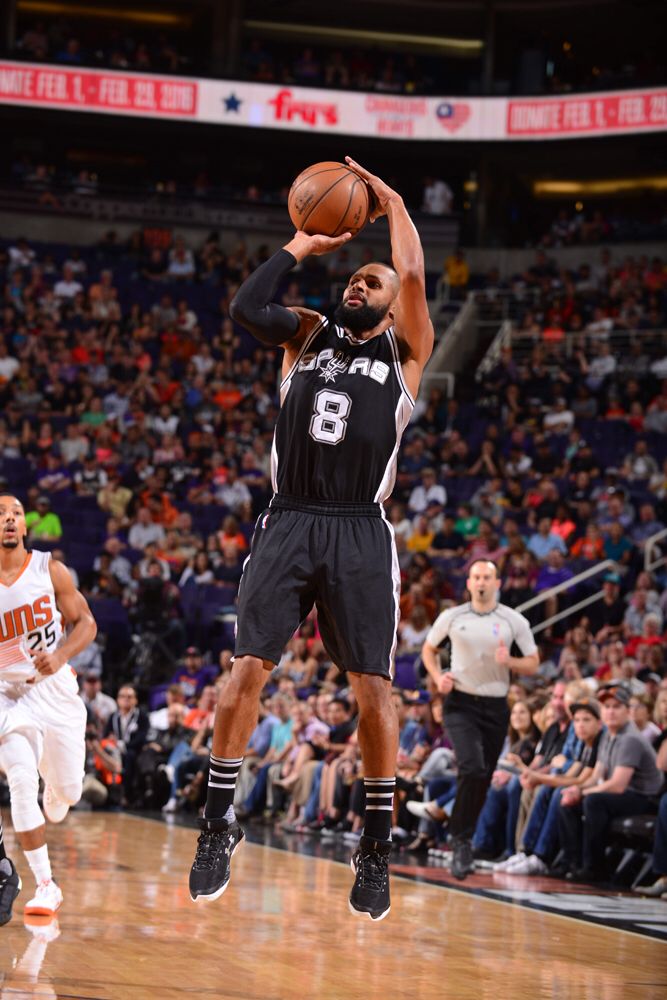
8 Keys to Fast Break Basketball Success1. Develop a Tough DefenseThe first key to being an elite fast breaking team is to develop a great defense.
I recommend man-to-man or Pack Line.
While it’s possible to push the ball off made baskets, it's MUCH easier to run off a stop. If you constantly have to inbound the ball, you won’t maximize your potential as a fast break team.
It’s great to push hard following a defensive rebound, but it’s even better to run following a live-ball turnover!
Motivate your team to defend by showing them the correlation between defensive stops and easy opportunities in transition.
2. Decide Who Will Push the BallOne decision coaches must make is to figure out which players should push the ball in transition.
There are two main options:
- Anyone pushes the ball after a steal or defensive rebound
- Outlet to the team's point guard to ignite the fast break
Both options have pros and cons.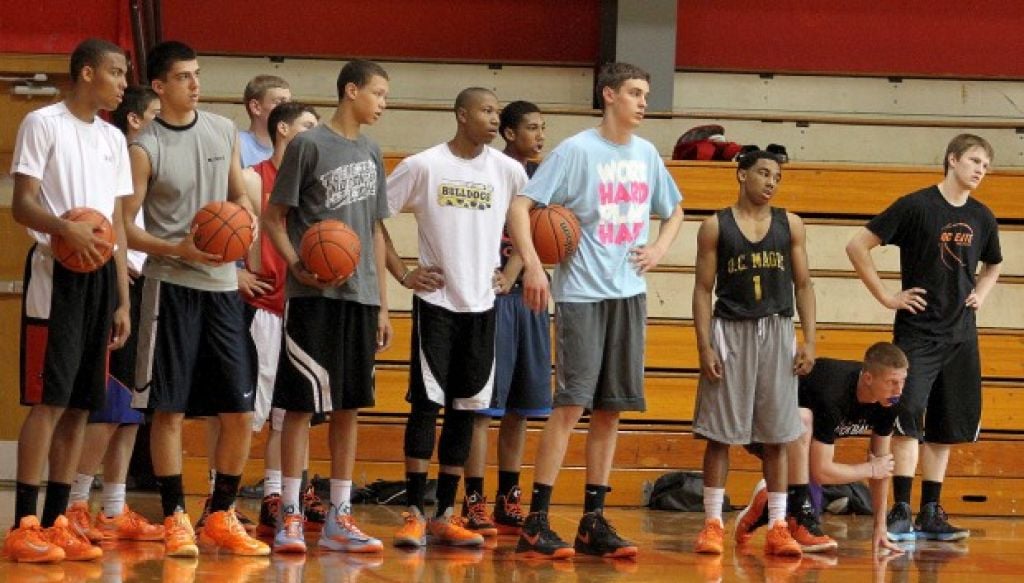
Allowing anyone to lead the break is inherently faster, but could lead to some turnovers as weaker ball handlers will be asked to make more decisions.
It may take a bit longer to outlet the ball to your point guard, but this option ensures a strong decision-maker is the one pushing the ball.
Neither is right or wrong; however, I would encourage youth coaches to give all players chances to handle the ball.
Turnovers may increase, but your whole roster's development will benefit.
3. Instill a Fast Break MindsetProbably the most important aspect of transition offense is instilling a fast break mindset in your players.
I recommend the term “RACE”.
We want to race down the court every possession to explore a potential advantage -- but this doesn't mean we should always shoot quickly.
We would love to create a great shot immediately, of course...
But we know that won't always happen.
At the end of the day, the important part is teaching your players to sprint their lanes every time.
If your team runs hard every time, it may create a transition advantage every third possession.
If your team walks the ball up every time, it will NEVER create a transition advantage.
It's better to habitually sprint the floor, seeking an opportunity.
4. Pass Instead of DribbleA simple way of improving your transition game is to pass the ball across half court as much as possible.
We all know that the ball moves faster with the pass than with the dribble.
Use this to your advantage by developing in your team the habit of passing up the sideline to gain separation from the defense.
Everyone should know where to run in transition. Most teams will assign a point guard, a rim-runner, a trailer, and two wings.
While you should allow all players to push if they have space, the best case scenario is to get the ball into your point guard's hands immediately.
They can then look to pass the ball up the sideline to a wing.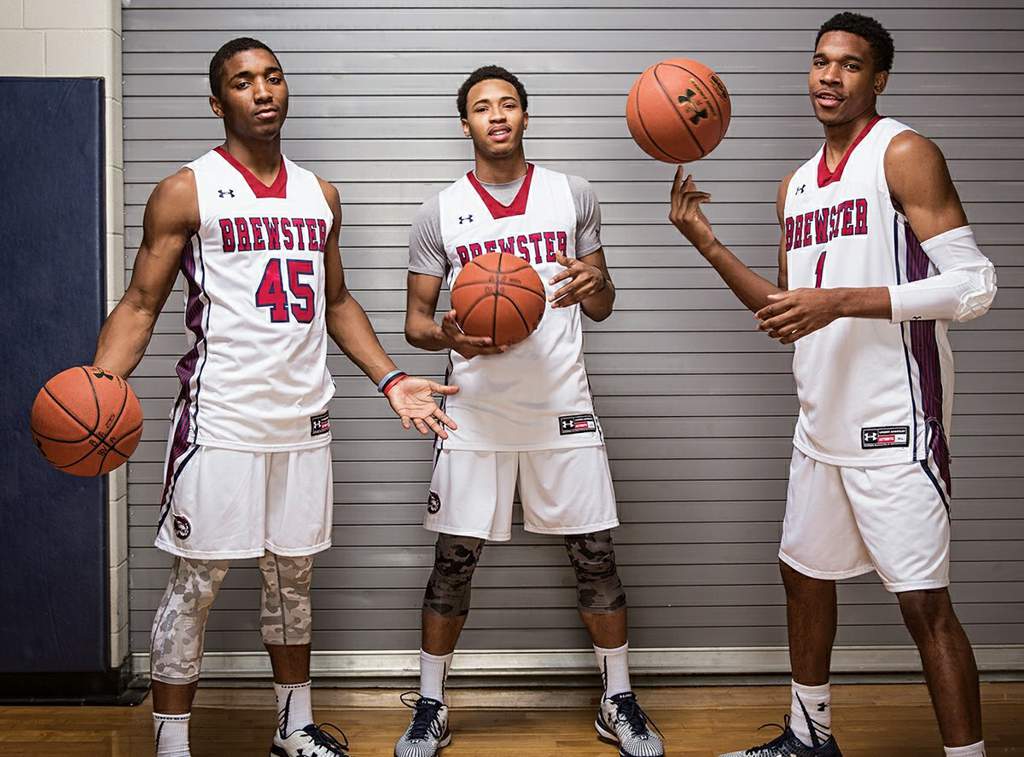
If the ball-side wing is not open, your point guard can “slice” through the middle of the court and look at the other wing.
This is often an effective pass because defenses tend to load to the ball side, leaving the weak side of the floor open.
5. Seek Out Advantage SituationsIn a perfect world, our fast break creates a 1-on-0 uncontested layup.
However, good defenses will rarely allow this.
More likely scenarios are the 2-on-1 or the 3-on-2 fast breaks.
If we can create one of these obvious advantage situations, we want to score before more defenders can get back.
In a 2-on-1, we always want a layup.
In a 3-on-2, we want a layup or a wide-open jump shot.
Many players are indecisive in these situations. Drill these scenarios regularly to instill an aggressive mindset in players.
6. Utilize "Breakout Dribbles"Although we prefer to pass the ball ahead, there will be times when players must attack off the dribble in transition.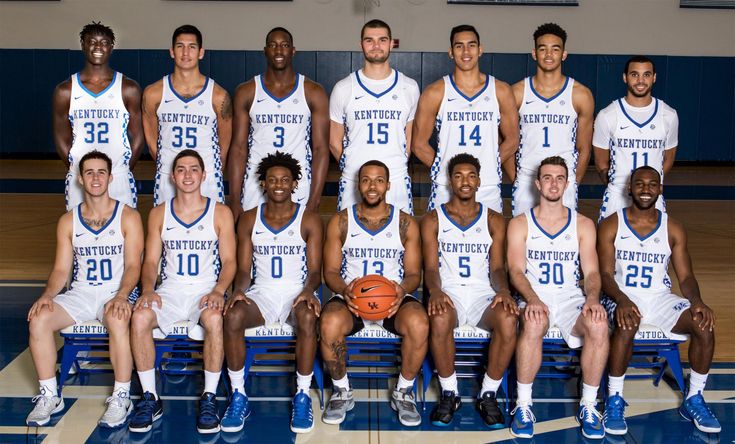
Teach your players “breakout dribbles” in these situations.
If a player catches in space with no teammate ahead of them, they should take big dribbles to advance the ball as quickly as possible.
Teach “chest to the floor” in a sprinter’s stance, and encourage players to take big crossover dribbles.
This maximizes distance and makes it harder for trailing defenders to backtap the dribble.
7. Get the Ball Into the PaintA crucial element of a fast break attack is helping your players understand WHY your team is choosing to play fast break basketball.
One of the key reasons is to get the ball into the paint.
PGC Basketball uses the term “hunt the paint”, which immediately puts players into an aggressive mindset.
There are several ways to attack the paint.
a. Rim-runner sprints the floor to get under the hoop
Tell your perimeter players that if a rim-runner has two feet in the pain, they MUST look to pass them the ball.
To motivate your post players to run the floor hard, they have to know that your guards are looking for them.
b. Perimeter players attack advantages off the dribble
For example...
If your point guard passes ahead to a wing player and the defense gives a long closeout, encourage them to shot fake and hunt the paint before the defense gets organized.
8. Flow Into Your Half-Court OffenseThe best transition teams are able to flow from their fast break into their half court offense.
You don't want your team to fast break and then have to pull the ball out to set-up a play.
Against good teams you won’t get a great number of layups in transition, but you can use a small advantage created by racing down the floor to create a bigger advantage later in the possession.
If the possession starts with a disorganized defense, your goal is to keep them disorganized throughout the entire possession.
If you don't have obvious numbers (2-on-1, 3-on-2), there are several options you have to flow into:
Here are two you can use:
(1) Pistols
Pistols is a common NBA action.
It's triggered by a wing entry, either off the pass or a dribble handoff.
(2) Klay
Run Klay when the ball is in the slot.
A “Klay Cut” – named after Klay Thompson - is our term for what some coaches call a “ghost screen” or a “running slip.”
In the diagram below, 4 runs at 1, fakes a ball screen, but slips into an open area. This action seeks to confuse the defense and could result in a free drive for 1 or open up 4 for a shot.
Both Pistols and Klay flow into the 4-out motion offense.
Gain an advantage with your fast break, maintain it by sprinting into Pistols or Klay, and then continue into your motion.
Fast Break Basketball DrillsThere are numerous fast break drills you can utilize with your team.
Although unfortunately, there are no “magic” drills that will immediately morph a team into an elite transition squad.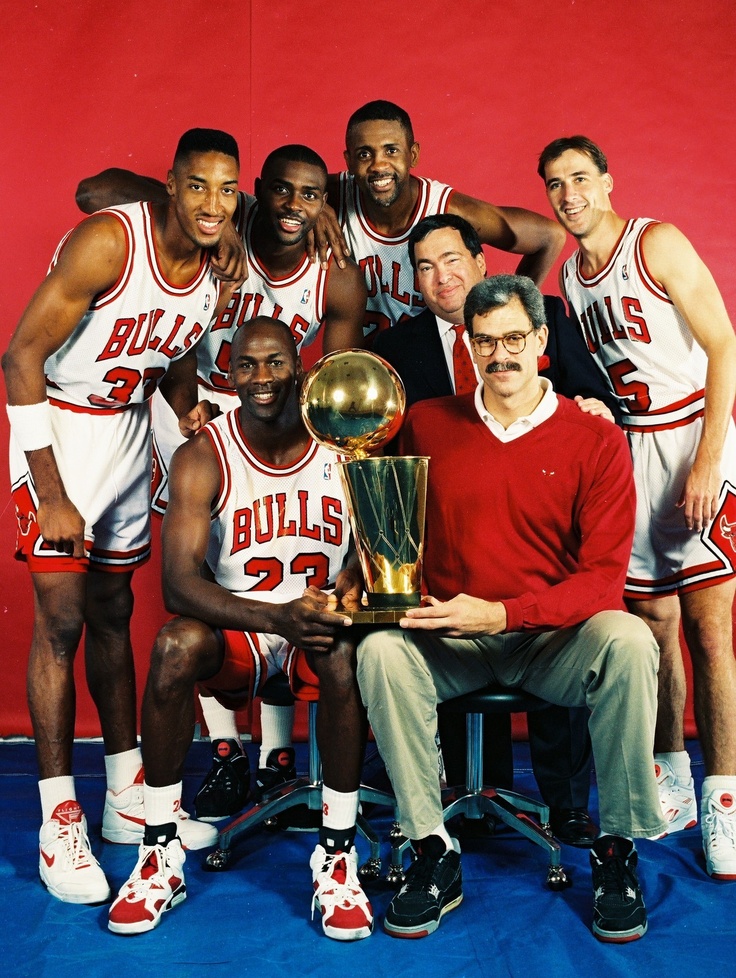
Rather, success if found more by emphasizing transition scoring in all elements of practice.
Some young coaches practice in the half-court far too much.
You must remember that basketball is a game of constant transition. And the easiest way to improve transition play is to transition a lot in practice.
Here are some fast break drills that we have found to be helpful in improving our transition play.
a. 3-Minute GamesThis is a very simple concept, but it's great for helping your players develop a fast break mindset.
And even if you aren’t a huge transition team, it is an excellent conditioner early in the season.
Simply full court scrimmage for 3 minutes.
Score the game as you normally would with one exception:
Award a point every time the offensive team gets the ball below the foul line in 5 seconds or less.
If possible, assign an assistant coach or parent the task of counting down from five on every change of possession.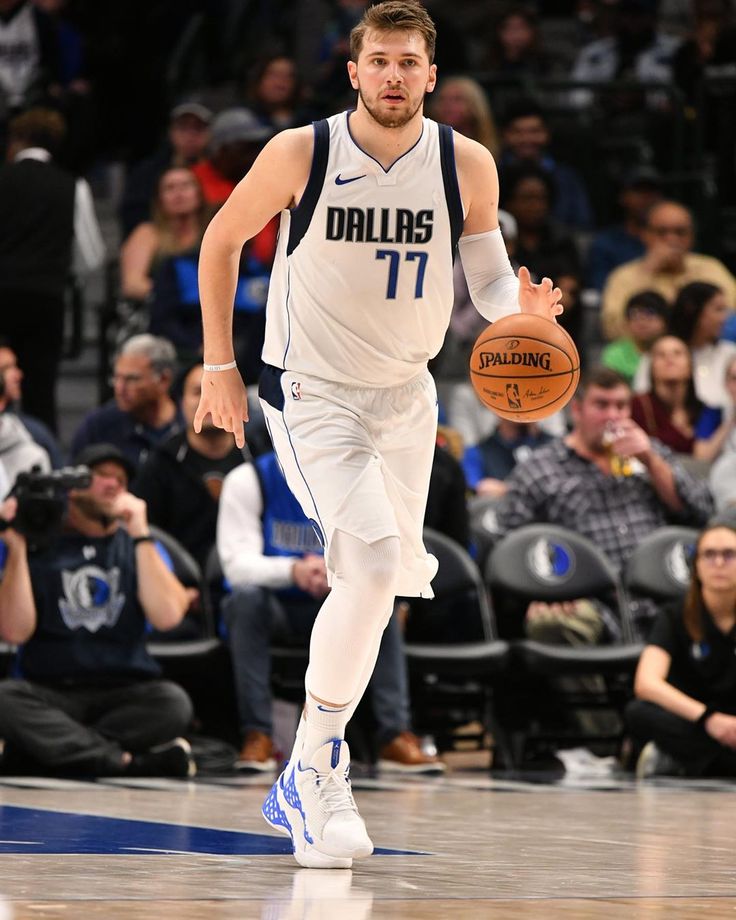
This rule encourages the offense to SPRINT and look to pass ahead if they want the potential extra point.
Award this point regardless of if the offensive team scores on that possession.
For example...
If the offense gets the ball below the foul line in 5 seconds and passes to the rim-runner for a layup, that would be a 3-point possession.
b. 5-on-5-on-5This game can be played 3-on-3 or 4-on-4, but 5-on-5 allows you to work on the Pistols and Klay options when your team doesn't score in primary transition.
Here's how it works:
Two teams play 5-on-5, with a third team standing on the sideline.
(if you have 20 or more players, four or more teams can play)
Play until someone scores.
If Team 1 scores, Team 2 is out.
Team 1 then pushes the ball the other direction as Team 3 sprints on.
The team entering must touch half court and communicate their matchups as they quickly get into their defensive positions.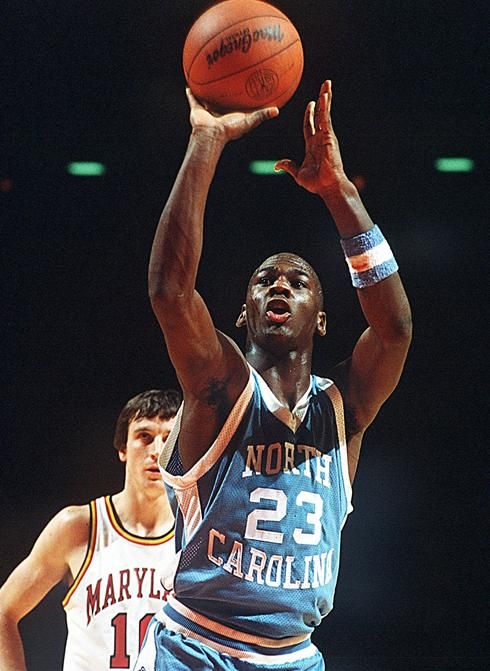
This is a fun game that develops offensive and defensive transition, while also serving as a great conditioner.
If you prefer to increase individual accountability, you can play with fewer players. For example, 3 on 3 on 3 makes it even more obvious who is not executing in offensive and defensive transition.
ConclusionCommitting to play fast break basketball can benefit any team.
Even if your team is not the fastest on your schedule, the habit of advancing the ball quickly to explore scoring opportunities will keep pressure on the defense and get your team playing together.
I hope that some of these concepts will help get your team off and running this season!
How to Defeat Teams with Superior Talent (Part 2)? – PhD Hoops
By Coach Walter Carvalho (originally appeared on coachwaltercarvalho.wordpress.com)
Below is a summary of our team game plan including our objectives at both ends of the floor when playing against opponents with superior talent.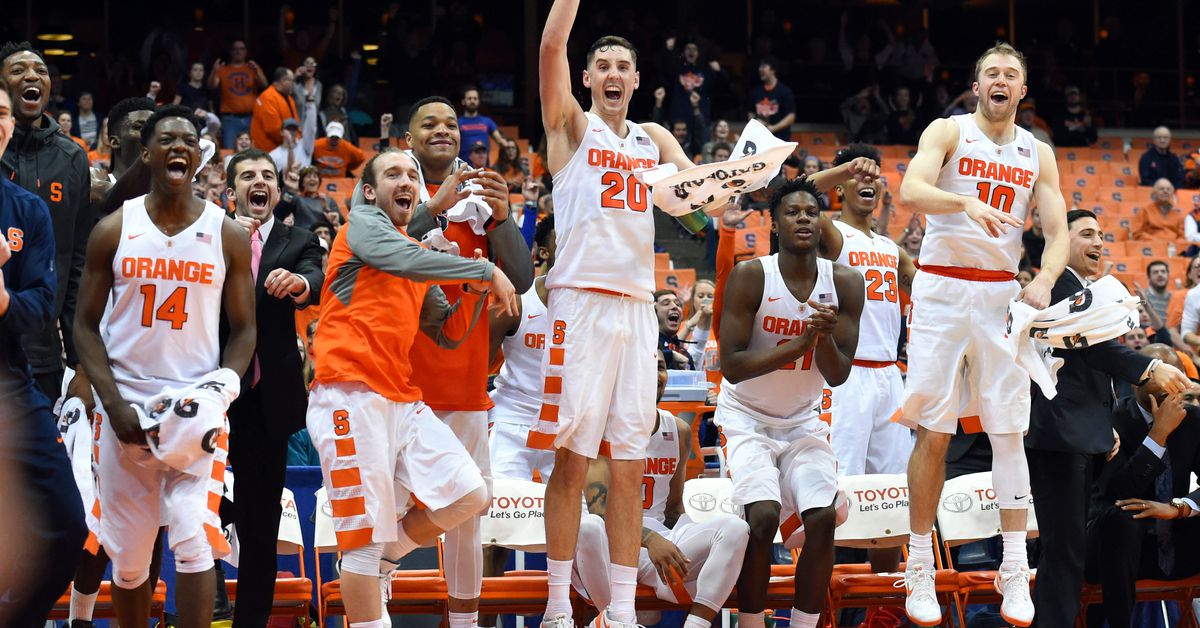 The key to the strategies listed below is to be unpredictable at both ends of the floor always.
The key to the strategies listed below is to be unpredictable at both ends of the floor always.
DEFENSE
1. Decrease the opponent’s ball possession time by being aggressive defensively – please note that being aggressive does not mean that a team needs to full court press, play man-to-man and or trap the opponent.
Most often we like to utilize combined defenses, disguising the initial formation while changing the defense pick up points during the game.
The objective is to force the opposing team to make adjustments during the game and control the rhythm of the game.
2. Reduce the opponent’s average field goal production production and percentage per possession during the game by:
- Keeping the ball away from the opponent’s point guard with the objective of destroying their offense flow and balance.
- Eliminating second chance opportunities is the key to minimizing opponent’s scoring per possession
- Denying the ball to the opponent’s top scorer with the objective of minimizing his total offensive touches and point production during the game.

- Eliminating easy baskets.
- Fronting the low post.
- Denying penetrating passes.
- Not double teaming or trapping with our players defending the opponent’s top scorers.
- Contesting every shot attempt.
3. Control the rhythm of the game by:
- Changing defenses during the game.
- Alternating defensive “pick up” points – half-court, ¾ court or full-court to break the offense ball and man flow.
- Forcing the opponent to offensive adjustments during the game.
- Denying the opponents first pass to the side and or player they favor,
- Denying “early” the outlet passes to point guard.
4. Control the defensive board by:
- Boxing out and rebounding – always have one more player fighting on the defensive board. Example: if the opponent fights on the offensive board with 2 players – we will have 3 players responsible for boxing out and rebounding.
5. Force the opponent’s best players to leave the game early by.
- Isolating them in some areas of the court.
- Forcing them to play defense and get in foul trouble early in the game.
OFFENSE
1. Increase the number of shot attempts during the game by:
- Implementing an offensive flow that will produce at least 10-15% more attempts than the opponent.
2. Increase shooting percentage per possession by:
- Taking high percentage shots – In this process “shot selection” is tremendously important. Equally important is to understand that a high percentage shot selection is the one taken by a player in his area of specialty. Not everyone has the green light to shoot from the 3-point line if that is not his area of specialty.
- Fighting on the offensive board. Have 2-3 players fighting on the offensive board.
3. Explore the individual ability of my players offensively by:
- Spreading the opponent’s defense.
- Playing facing the basket.
- Creating situation of on-on-one, two-man and three-man game – using continuous ball and man flow with screens and cuts to the basket.

- Implementing an acute game – Attacking the rim.
4. Force the opponent to change their defense to zone if in man-to-man by:
- Attacking their best scorers. Force them to get into foul trouble early in the game.
- Isolating the opponent’s post players forcing them to play away from the basket.
I believe that adopting a game plan that is not easily predictable is a plus.
I also believe that in high-level and modern basketball, the coach cannot adopt a single game system against all opponents.
An effective game plan should vary and be based on the overall statistics of the opponent (team and individual).
The team that does not vary its defense and offense according to the characteristics of the game and the opponent is not practicing a high-level and modern basketball and is at the same time minimizing its chances of success.
Walter Carvalho is the Director and Founder of WA Sports Consulting, a sports-business consulting firm based in Birmingham, Alabama.
www.wasportsconsuting.com
A. Ya. Gomelsky about strategy and tactics in basketball
copies of swiss watches
Strategy is the main theoretical direction of the entire work of the team, which determines the means and methods of preparation for the main competitions. Four-year plan for the preparation of the USSR national team for the Olympics in Seoul - the strategy of the team in 1985-1988. The strategy also provides for the management of the team during the competition.
Tactics is a part of the strategy that solves the main tasks of training, taking into account specific capabilities - team resources, characteristics of opponents, competition conditions. All this determines the tactical and combination baggage of the team.
When choosing tactics of the game (attack), one should proceed, firstly, from the real capabilities of the players, taking into account, first of all, their strengths, for the disclosure of which combinations are built and learned. Secondly, attack tactics are determined by the strength and weakness of a real opponent in a tournament, match.
Secondly, attack tactics are determined by the strength and weakness of a real opponent in a tournament, match.
I usually discuss playing combinations with the players for whom this combination is designed. I know the strengths of my players, but the players themselves know them even better and can make significant adjustments to the combinations I have proposed.
A.Ya. Gomelsky about playing defense
I believe that defense is the main concern of the coach: firstly, because the victory of the team largely depends on its strength, secondly, because the attack starts from the defense, like from the stove, in- thirdly, because the players themselves never work on the elements of protection, and finally, because the audience, as a rule, does not see it, even journalists often underestimate it.
The best team cannot win without a solid defense. Team defense is built on the individual characteristics, capabilities and mood of all players.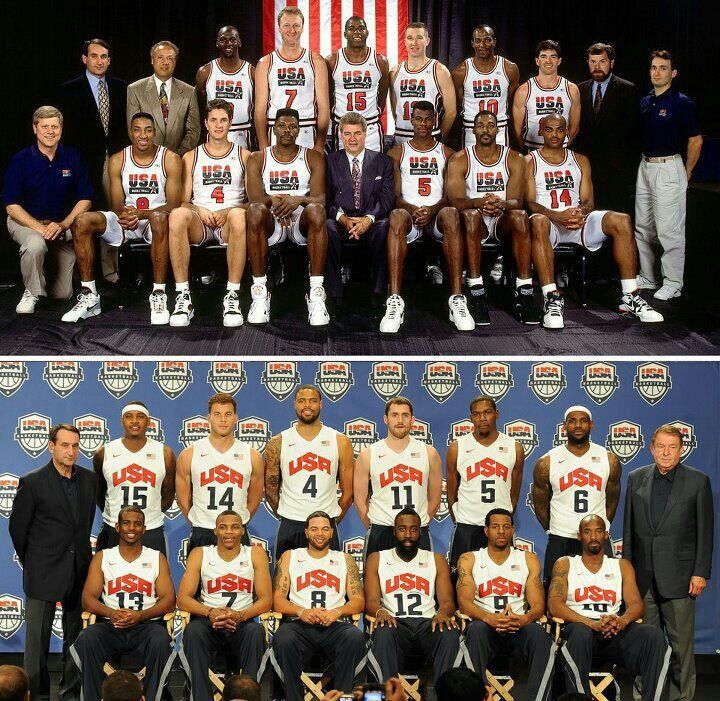 Often in training, and even in competitions, individual players show indifference to defensive actions. It always bothered me and even angered me. Yes, the menial work on defense isn't that spectacular - except for things like block shots, rebounds, interceptions.' And many players are not aggressive on defense, they are resting on defense, trying to prove themselves in attack.
Often in training, and even in competitions, individual players show indifference to defensive actions. It always bothered me and even angered me. Yes, the menial work on defense isn't that spectacular - except for things like block shots, rebounds, interceptions.' And many players are not aggressive on defense, they are resting on defense, trying to prove themselves in attack.
I am sure that without great desire, responsibility, initiative, passion, it is simply impossible to defend today.
If the defender allowed the attacker to receive the ball in the danger zone, he has already lost. And how many cases when the center is allowed to receive the ball in the three-second zone under the shield, without striving to actively fight for an advantageous position.
Often defensive players are in no hurry, they do not concentrate their attention and efforts enough on this part of the game.
I want to emphasize that the psychology of defense is one of the most important concerns of a coach, and often more depends on the focus on defense than on technique and physical condition.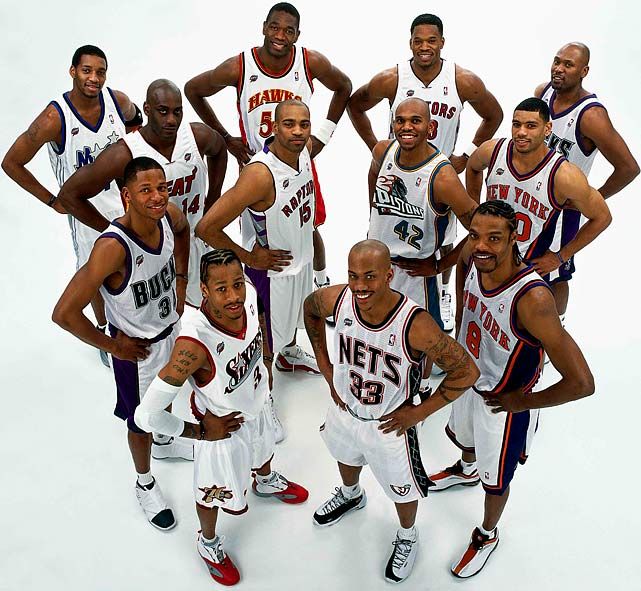 Doesn't the ability to intercept the ball and win the rebound depend on the mind and the ability to calculate one's strength? If a player goes to intercept the ball, exposing his rear, and slips past the ball, is this not the result of poor calculation, inability to predict, anticipate the situation, think and act responsibly? All this is the psychology of protection.
Doesn't the ability to intercept the ball and win the rebound depend on the mind and the ability to calculate one's strength? If a player goes to intercept the ball, exposing his rear, and slips past the ball, is this not the result of poor calculation, inability to predict, anticipate the situation, think and act responsibly? All this is the psychology of protection.
I believe that a player who is weak and inept in defense causes more damage to the team than a player who is weak in attack. The definition of "good defense is head and legs", while still valid, is incomplete. Fast, tenacious, active hands that can both hit and intercept the ball, and prevent a throw, pass, kick the ball while dribbling - are no less important for a defender
Counterattack
Counterattack is the most spectacular and quick use of all opportunities to achieve result.
Fast play requires high technique. The desire to play at high speeds is commendable and acceptable only if the speed does not exceed the state of the art.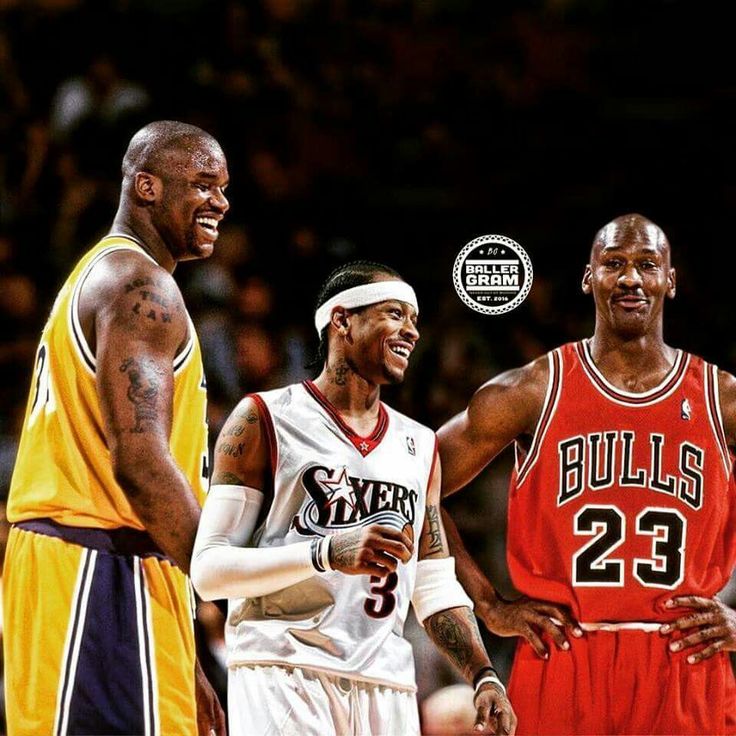 Otherwise, there will be more mistakes, losses of the ball than achievements. Therefore, in an effort to prepare a fast break, it is necessary to train the execution of all technical elements at high speeds, using both active and passive resistance of defenders in situations 1-1, 2-1, 3-2, 4-3, 5--4 and with numerical equality.
Otherwise, there will be more mistakes, losses of the ball than achievements. Therefore, in an effort to prepare a fast break, it is necessary to train the execution of all technical elements at high speeds, using both active and passive resistance of defenders in situations 1-1, 2-1, 3-2, 4-3, 5--4 and with numerical equality.
My idea of a counter-attack is not only to move quickly towards the opponent's backboard, but also to quickly transfer the ball to the opponent's backboard with sharp passes, or, if there is no free recipient to receive the ball, by dribbling the ball, actively moving forward. In the final stage of the fast break, players strive to create a triangle in the front line of attack with the apex on the free throw line. There should be a player with the ball, and two other players - to the left and right of him, 4-5 m ahead.
A counterattack is possible in the following situations:
1) when intercepting the ball;
2) when taking a rebound on his shield;
3) after the opponent has made free throws;
4) after winning a dropped ball;
5) after the opponent manages to score the ball.
The best outcome of a fast break is taking the opponent's ring with a numerical advantage, when implementing situations in numerical equality: 1-1, 2-2, 3-3, 4-4. This is easier than beating a 5-5 defense that has already built up its defensive formations.
There are three phases in a counterattack that are equally important for success:
1) the beginning of a fast break - picking up the ball, first pass, movement of the players, their start;
2) the middle stage of the development of the attack - the transition by the players of the middle line of the field, their advancement;
3) completion of the attack - passing the ball at speed and throwing in close proximity to the backboard.
The timing of the "rehearsed fast break" depends on the speed of the players, the ball passes and the finishing shot. The USSR national team spent 5-7 s on a layered fast break. I think that the schemes of her tactical formations will provide great opportunities for the creativity of coaches working with any teams.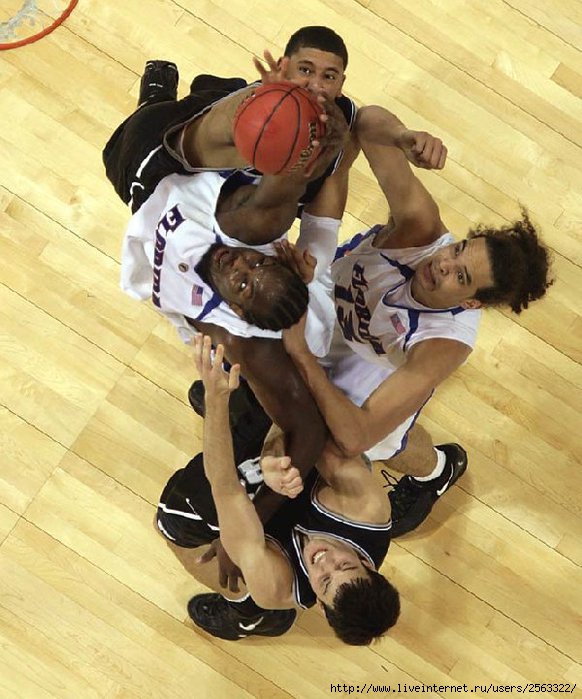
Playing in the USSR national team such powerful and tall centers as A. Sabonis and V. Tkachenko made it possible to carry out a counterattack through one long pass across the entire court.
Center #5, after recovering the ball from the backboard, passes it to runaway #2.
Such an attack was especially successful when building a zone or mixed defense, when one of the defenders or wingers playing in the front line of defense was given the task of running away at the moment of throwing at our ring, in the expectation that the giants would be able to take possession of the ball , bouncing off the shield, and make a long pass across the entire field. Naturally, such a system of counterattack requires special coordination of actions, and its development takes considerable time in the training process.
Development of a quick counter-attack through the middle of the field.
Players #5, #4, #3 are fighting for the ball and, having mastered it, they try to make the first pass to player #2, who passes the ball to player #1.:no_upscale()/cdn.vox-cdn.com/photo_images/7804002/20120707_gav_sv5_038.jpg) Player #1 rushes forward dribbling through the middle of the court. Players #2 and #3 overtake the dribbler at high speed, form a triangle with #1, and finish the attack with a close range throw if they manage to create a numerical advantage under the opponent's shield.
Player #1 rushes forward dribbling through the middle of the court. Players #2 and #3 overtake the dribbler at high speed, form a triangle with #1, and finish the attack with a close range throw if they manage to create a numerical advantage under the opponent's shield.
If it was not possible to complete the attack in the first echelon, then the second echelon comes into action - center players #4 and #5. They, each on their own side of the court, rush to the opponent's shield. The one on whose side the ball is on ends the attack.
Development of a fast sideline break.
On a rebound from the left side of the backboard, the post makes a quick pass to player #2, who opens to receive the pass to the sideline, just above the free throw line. At the intersection of the sideline with the center, player #1 receives a pass from player #2, then passes it to player #4, who rushes forward on the left side. Player #4 has three possible continuations of the attack: give the ball to player #5 or #3, who is running towards the opponent's backboard in a straight line, or pass to player #2 in the area of the arc. It is clear that the transfer should be made to the most open player, who is in the most advantageous situation.
It is clear that the transfer should be made to the most open player, who is in the most advantageous situation.
A similar situation occurs when attacking on the opposite side.
Development of a fast break after a free throw into our ring.
If player #4 catches a bounce or quickly clears a potted ball from behind the endline, the first pass is to the left sideline to player #1 opening at or slightly above the free throw line. Player #2 opens near the center circle, receives the ball and dribbles forward. Players #5 and #3 pass the dribbler along the touchlines, player #4 overtakes him from the right, and player #2 stays slightly back in the backing position. Thus, player #2 has four options to choose the direction of the attack.
Same procedure as above, but after rebounding a field goal or after the ball is thrown in from behind the end line.
Developing a fast break after a dropped ball in the center circle or on the free throw line in our half of the field.
Player #5 discounts player #4 who is ready to receive the ball with his hands up. After catching the ball, #4 passes forward to player #1, who opens up to receive that pass after being screened by player #3. Players #2 and #4 support the attack. Such a combination can be played in both directions. At the heart of her success is high growth, good jumping ability and the ability to accurately throw the ball to the partner of the center player.
Same scheme, but now player #4 screens player #2 who, having received the ball from player #3, rushes forward.
The easiest way to complete a counterattack is for the players to take the shortest path to the opponent's shield. However, with the development of a counterattack, options are possible with cross screens
interaction like a trio
setting up screens for the players of the second echelon in the center of the field.
Many teams in the world, including the USSR national team, after they failed to complete the counterattack with a scoring throw, in the transition to a positional attack, spent precious time placing players, thus allowing the enemy to prepare for defensive actions and occupy all defenders advantageous positions. This is why a quick or non-stop attack after a counterattack ("transition game") is increasingly used in the tactics of the best teams in the world. I will give an example of such an attack in the USSR national team.
This is why a quick or non-stop attack after a counterattack ("transition game") is increasingly used in the tactics of the best teams in the world. I will give an example of such an attack in the USSR national team.
The fast break was not completed by the players of the first attack tier #2 and #3, nor the second tier #4 and #5. They, each on their own side, set up screens for fielders #3 and #2 for a shot from medium or long distance, and then go to the backboard to receive the ball in the three-second zone on the spot or to fight on the backboard, after a throw from one of the players # 2 or #3. Options for a non-stop attack can be very different. This could be a double or triple screen for the team's sniper, or a winger or post entering the 3-second zone after receiving the screen. It all depends on the characteristics and capabilities of the player for whom the combination is being made.
Double screen to Marciulionis (#2) to attack with his left hand from the free throw area.
Players #4 (Volkov) and #3 (Tikhonenko) simultaneously put up two screens for player #2 (Marciulenis). #2 breaks into the free throw line, where he receives the ball from player #1 (Sokka). "Marciulionis has opportunities to continue the attack:
a) receiving the ball in motion and passing under the backboard;
b) receiving the ball with a stop and shooting at ring;
c) passing the ball to player #5 (Sabonis) in case there is a switch of defenders.
Players #4 and #2 after screening go under the backboard to fight for the rebound.
Mixed defense
There are several systems of mixed defense:
1. Four players build a zone defense 2-2
or 1-2-1
capabilities and tactics of the opponent.
2. Three players build a 2-1 zone defense and two guard the enemy's strongest snipers.
3. One player completes the zone formation while four players cover the opponents personally.
4. Two players form a zone defense and three players act as an individual defense.
Two players form a zone defense and three players act as an individual defense.
Mixed defense brought good luck to the USSR national team and the CSKA team more than once. The choice of defense has always been determined by the characteristics of the opponent and our capabilities.
In the final of the Olympic tournament in Seoul against the team of Yugoslavia, we used a mixed defense 1-4.
Sabonis played a zone defense, the rest of the players closely guarded their opponents. This was due to the presence of Vrankovic or Raja in the Yugoslav team, who are not very dangerous away from the shield, and the fact that Petrovich, Paspal, Kukoch posed a big threat. The players who guarded the leaders of the Yugoslav team could, with a greater degree of risk, fight with their opponents to get the ball. They knew that Sabonis would help them if they were beaten.
A similar defense was chosen in the semi-final tournament in Seoul against the US team. Sabonis did a zone defense and let Robinson or Reed or Maning shoot from wide. But the rest of the US players were completely covered, and a player like Maning did not bring a single point to the team. As a result, the USSR national team won 82:76. And Sabonis, who participated in the Olympics after a serious injury, two operations, took first place in the selection of balls from shields and made a great contribution to the victory of the USSR team.
Sabonis did a zone defense and let Robinson or Reed or Maning shoot from wide. But the rest of the US players were completely covered, and a player like Maning did not bring a single point to the team. As a result, the USSR national team won 82:76. And Sabonis, who participated in the Olympics after a serious injury, two operations, took first place in the selection of balls from shields and made a great contribution to the victory of the USSR team.
Sometimes, with two centers Sabonis - Tkachenko, we built a mixed, personally set defense 3-2. Two giants and one mobile defender played well in the zone. In the early 70s, it was Eremin, then Valters, and at the Olympics and the pre-Olympic tournament Sokk performed this function, and Belostenny and Volkov played instead of Sabonis and Tkachenko in Holland.
At the Seoul Olympics, we used such a defense (3 in the zone, 2 in person) against the Brazilian team.
Sabonis, Volkov and Sokk built a triangle on top of which Sabonis and Volkov played. Tikhonenko took care of So-uzu personally, and Marciulionis took care of Schmidt, and although these two players scored 65 points together, the match turned out to be very difficult for us, but we still won 110:105. The mistake in the choice of defense was that Schmidt outplayed the smaller Marciulionis in different positions, and Souza outplayed the slower Tikhonenko. In the last 10 minutes of the match, Volkov was attached to Schmidt, Marciulionis switched to Souza, and we changed Tikhonenko to Goborov in zone defense.
Tikhonenko took care of So-uzu personally, and Marciulionis took care of Schmidt, and although these two players scored 65 points together, the match turned out to be very difficult for us, but we still won 110:105. The mistake in the choice of defense was that Schmidt outplayed the smaller Marciulionis in different positions, and Souza outplayed the slower Tikhonenko. In the last 10 minutes of the match, Volkov was attached to Schmidt, Marciulionis switched to Souza, and we changed Tikhonenko to Goborov in zone defense.
Benefits of mixed defense
allows you to fight with him to get the ball, while expecting the active help of teammates, without fear of a throw.
2. Such a system, if the opponent is not prepared for it, tactically introduces confusion and makes it difficult to carry out combinations of screens.
3. Combines the best aspects of individual and zone protection systems.
4. Promotes a quick transition from defense to counterattack.
5.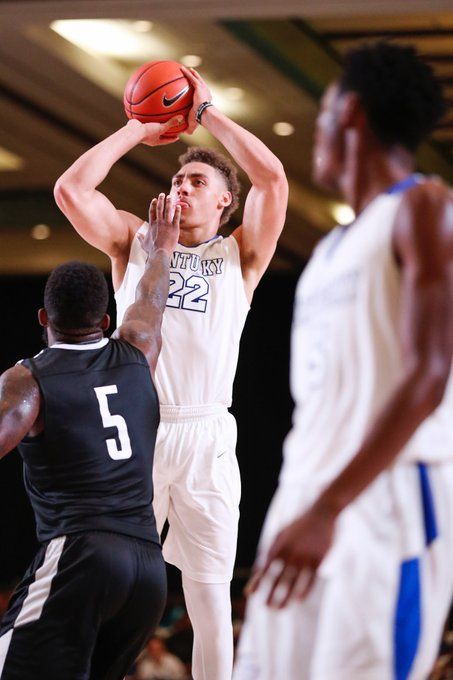 Allows players to use their strengths defensively and not show their weaknesses.
Allows players to use their strengths defensively and not show their weaknesses.
6. Can take the point guard out of the game and deprive the opponent of the usual formation and rhythm, destroy the counterattack if applied pressure throughout the field.
Weakness of the mixed defense
1. A technically competent team that has several leaders easily rebuilds the offense and breaks the mixed defense.
2. Simultaneous movements of two or three players diagonally can destroy a mixed defense if the opponent manages to create a numerical advantage on one of the sides of the field.
3. Often vulnerable to medium throws from 3-4 m.
4. Requires special long preparation, coordinated actions, high teamwork of the whole team for rebuilding and interchangeability in positions.
5. If one of the five players did not have time to reorganize or did not cope with his duties, then the whole idea of such a defense breaks down.
A.Ya.
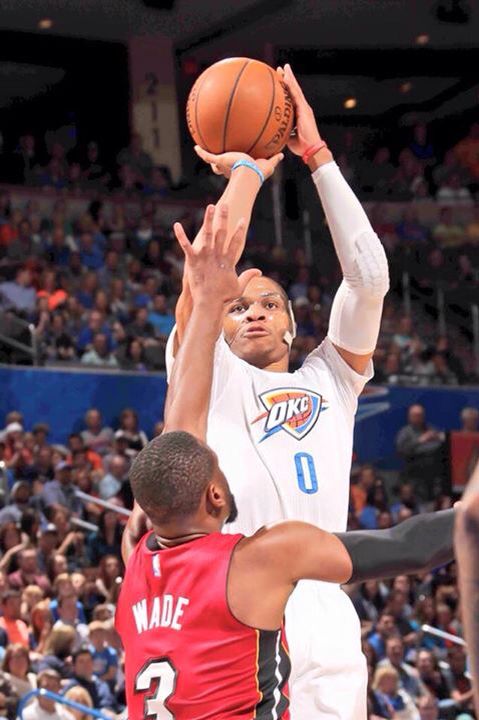
Gomel. Pressing defense
Pressing is the most active type of defense, constant pressure on the opponent. It can be personal or zone, it can start from the moment the opponent throws it: all over the court, on 3/4 of it, in their own half, i.e. on 1/2 site.
The goal of defense by pressing is not only psychological pressure on the opponent, but also the desire to break the opponent's established game, break his habitual connections between defense and attack, his combinations, make inaccurate passes of the ball, hasty - throws. It is impossible to apply pressure without mastering enough methods of individual protection. This form of defense requires high physical condition, good reserve and teamwork of all players and team units.
Pressing is used both as a system of play for long periods of time, and as a forced measure: when losing in a score to increase the pace or when waiting for pressure from an opponent.
By pressing, we try to take the ball away from the opponent - we force him to make false, inaccurate passes that are easily intercepted.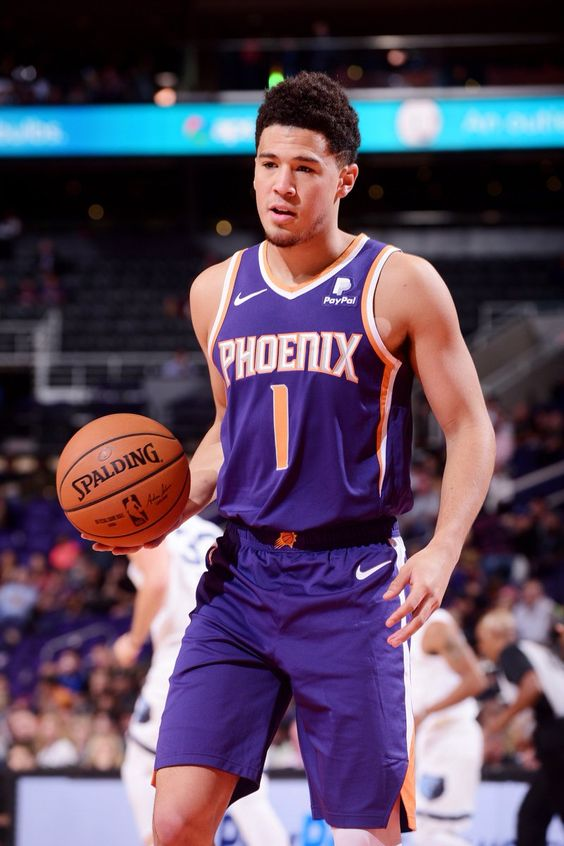 Often, the opponents of the front line of pressing, having missed the opponents, do not pursue them, but watch the development of further events - this is a gross mistake. It is necessary to chase the player with the ball, trying to knock the ball from him from behind, stepping on his heels. Thus, you force the opponent to rush, worry, make mistakes.
Often, the opponents of the front line of pressing, having missed the opponents, do not pursue them, but watch the development of further events - this is a gross mistake. It is necessary to chase the player with the ball, trying to knock the ball from him from behind, stepping on his heels. Thus, you force the opponent to rush, worry, make mistakes.
If in zone or personal pressing you are left without a player and do not help a friend, you make a miscalculation. If one of the five pressers is not active, the work of the entire team goes down the drain. Pressing is primarily an active defense of the team.
In modern basketball, many coaches tend to believe that personal pressing is less effective, difficult, leads to a large number of personal violations and is inferior in usefulness to zone pressing systems. I also believe that a strong, technical player with good dribbling is able to cope with personal pressure.
In addition, with a stretched defense, it would be incredibly difficult to keep such players as Marciulionis, Volkov, Kurtinaitis, Petrovich, Schmidt, Kukach, Paspal, Rivier, Gallis one on one. I'm not talking about NBA players. But although zone pressing has become more popular, it is impossible to do without the ability to play personal pressing. Therefore, it is necessary to train defense daily 1-1, 2-2, 3-3, 4-4 all over the court, with and without the ball, with and without dribbling, with and without screens, first at a walk, then at high speed.
I'm not talking about NBA players. But although zone pressing has become more popular, it is impossible to do without the ability to play personal pressing. Therefore, it is necessary to train defense daily 1-1, 2-2, 3-3, 4-4 all over the court, with and without the ball, with and without dribbling, with and without screens, first at a walk, then at high speed.
Exercises are useful in which the number of defenders prevails over the number of attackers. These exercises promote the interaction of the defenders, instill the skills of tackling the ball. They are also good for attacking players. When training personal pressing, due attention should be paid to the rapid movements of players in an active stance, in different directions, with a skillful change in the positions of players. Defenders of the first line of defense seek to push their attackers to the sidelines and prevent the attacker from getting around him with the ball and without the ball.
If one of the defenders managed to stop the attacker with the ball at the touchline at the intersection with the penalty or center line, the defensive partner must come to the aid of a friend: together they force him to make a cross pass, which the other three players are ready to intercept.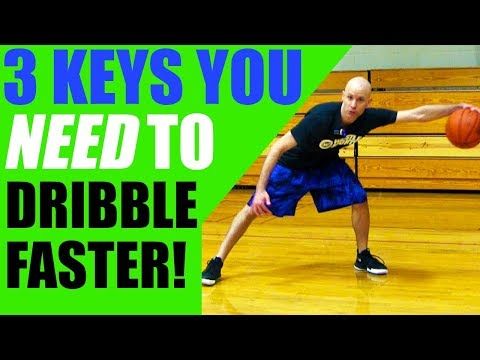
The initial stage of personal pressing is carried out by two fundamentally different tactical formations:
1. The opponent who introduces the ball into the game holds a high moving edge and with an active movement of the hands prevents him from making an aimed pass.
2. No one guards the opponent who puts the ball into play, but two pressers prevent the most dangerous dribbler from getting the ball.
For example, Volkov secured Sokk and Marciulionis from behind when passing to player 5.
A few tips when defending with personal pressure: make him stop and do not let him make an accurate pass, interfering with his hand movements;
2) if the defending partner allowed himself to be bypassed, immediately come to his aid, of course, without leaving your ward in a safe position under the shield;
3) constantly watch not only your ward, watch the actions of partners, learn to see the whole field.
In the USSR national team and CSKA, zone pressing 1-2-1 - 1 brought us the most success. We started pressing from the opponent's front line after a goal and a free kick. High extreme Volkov interfered with the throw-in. If the ball was injected to the right, Marciulionis and Volkov attacked X2 defender together, trying to prevent him from going forward and make an aimed pass to XI defender, Sokk followed the movement of X3 and X4. Sabonis secured the rear, was responsible for long passes and for the X5 player. Tikhonenko in the center of the field followed X4's pass with a long pass and went to the ball passing side.
We started pressing from the opponent's front line after a goal and a free kick. High extreme Volkov interfered with the throw-in. If the ball was injected to the right, Marciulionis and Volkov attacked X2 defender together, trying to prevent him from going forward and make an aimed pass to XI defender, Sokk followed the movement of X3 and X4. Sabonis secured the rear, was responsible for long passes and for the X5 player. Tikhonenko in the center of the field followed X4's pass with a long pass and went to the ball passing side.
Returning with a weak attack, we built a defense 2-3
Zone defense in basketball
The meaning of this defense is that the players are in charge of a certain area of the field, in accordance with the position of the ball and the formation of the attacking team.
Benefits of zone defense:
1. Gives the opportunity to arrange players according to their physical, technical and mental characteristics.
Tall, jumpy players are located close to the shield, mobile, fast players - in positions higher from the shield.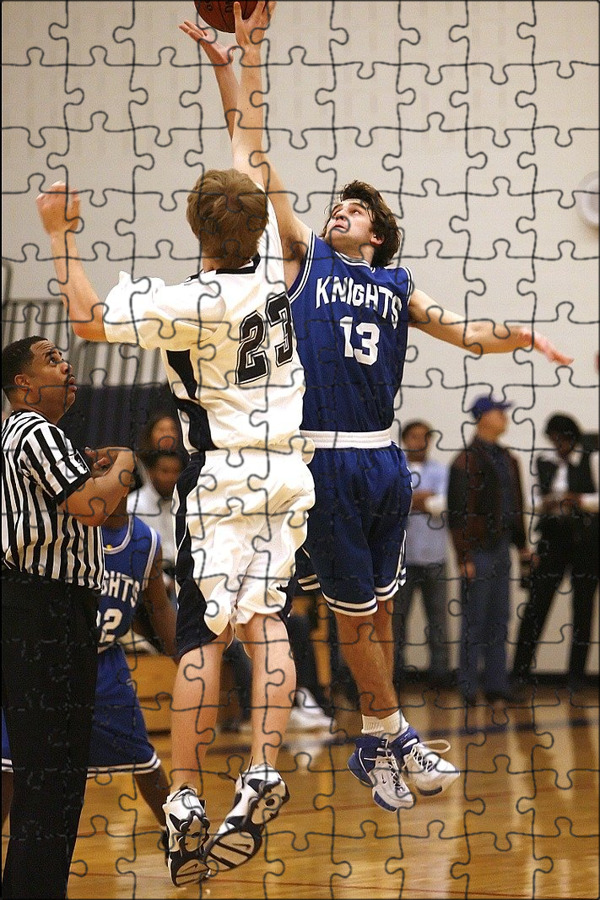
2. More commanding, easy to master, able to compensate for the individual gaps in the defense of the players.
3. Promotes counter-attacking and frequent interceptions of the ball with the greatest possible degree of risk, because. Partners are always ready to help.
4. The number of fouls in a zone defense is usually less than in a personal defense.
5. This defense is less vulnerable to screen combinations.
6. Can concentrate with strong opponent centers and stretch with snipers.
7. More than personal protection, it saves players' strength and protects leaders from fouls.
8. Most effective against opponents with strong centers.
9. A team that owns a zone defense can easily build mixed forms of defense: 3-2, 4-1, 2-3.
10. Convenient and suitable for small fields.
Disadvantages of zone defense:
1. Inferior to the personal psychological responsibility of the players, their charge for individual victory in defense.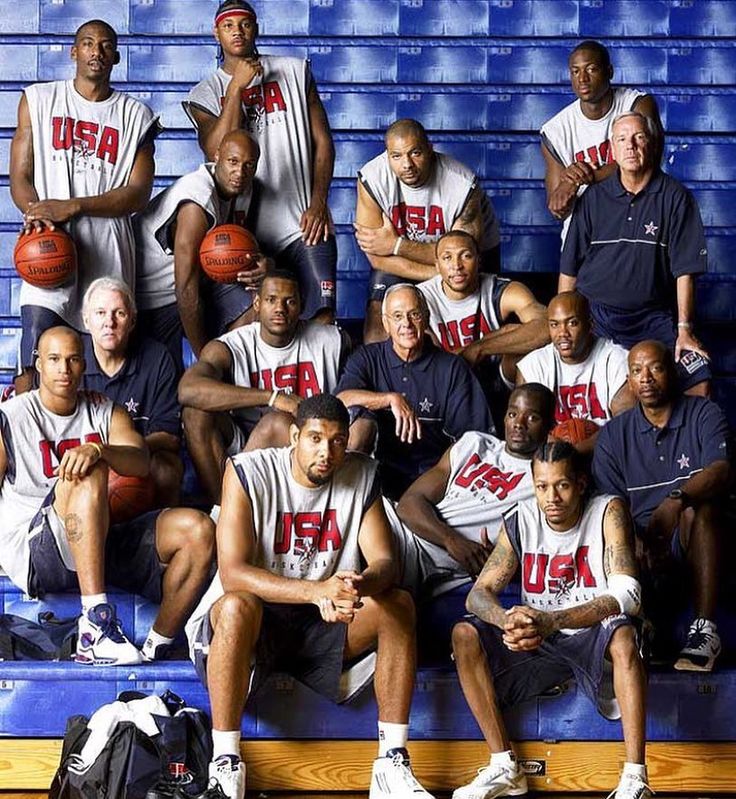
2. Less useful against teams with strong snipers.
3. As a rule, the corners of the court are less protected in zone defense.
4. Zone defense can be used occasionally and should not be the main form of defense. It is not advisable to use zone defense at the beginning of the match, when the opponent's players are not yet tired, energetic enough - their throws are more accurate and productive than at the end of the game.
There are several formations of the zone defense, however, each of the zone defenses should easily transform depending on the attack - stretch when attacking from a distance and group around the ring.
Even type of zone defense formations includes systems: 2-2-1, 2-1-2, 2-3.
Odd formation: 1-2-2, 1-3-1, 3-2.
Each of these constructions has its advantages and disadvantages, which are useful to analyze.
The arrows indicate the direction of movement of the players. The shaded places on the court are the weak positions of the defense.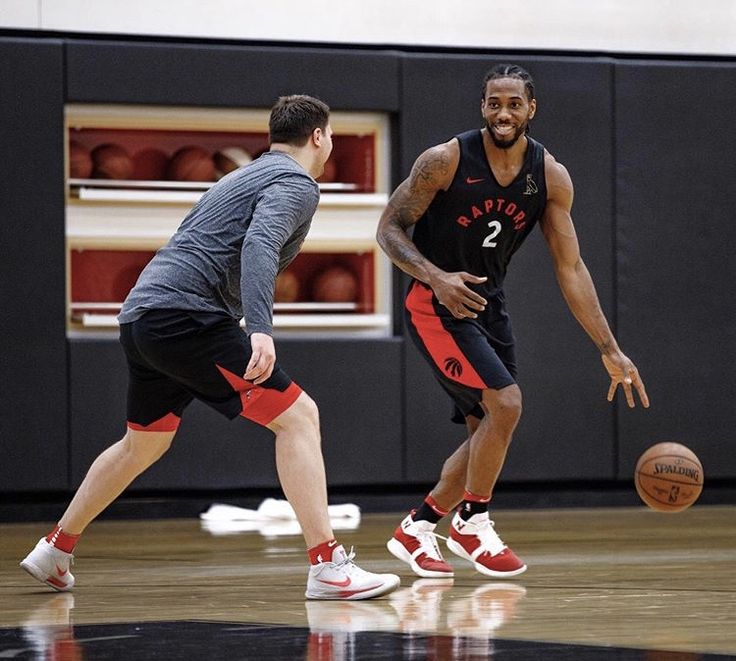
Zone defense 1-2-2
#1 - the lightest, fastest defender, #2 and #3 - quite mobile, jumpy, good if their height is at least 2 m. #4 and #5 - centers. Their task is to fight with the opponent's centers, picking up balls from the shield.
This system is most useful against teams trying to attack from under the shield through the post. Disadvantages - weak positions indicated in the figure.
Zone defense 2-1-2
It is used against strong opponent's centers who are dangerous on the "second floor" when rebounding the ball. Good for developing a counterattack with fast #1 and #2 players. Vulnerable in corners under 45, in the center for long and medium throws. The task of post #5 is to mark the opponents' post and, together with ?3 and ?4, create a rebounding triangle. #3 and #4 are mobile and high wingers, they can be swapped depending on the place of the sniper's attack.
Zone Defense 1-3-1
Helps to keep #3, #5, #2 between the ball and the basket at all times, used against opponent's strong centers and shots from middle and close positions.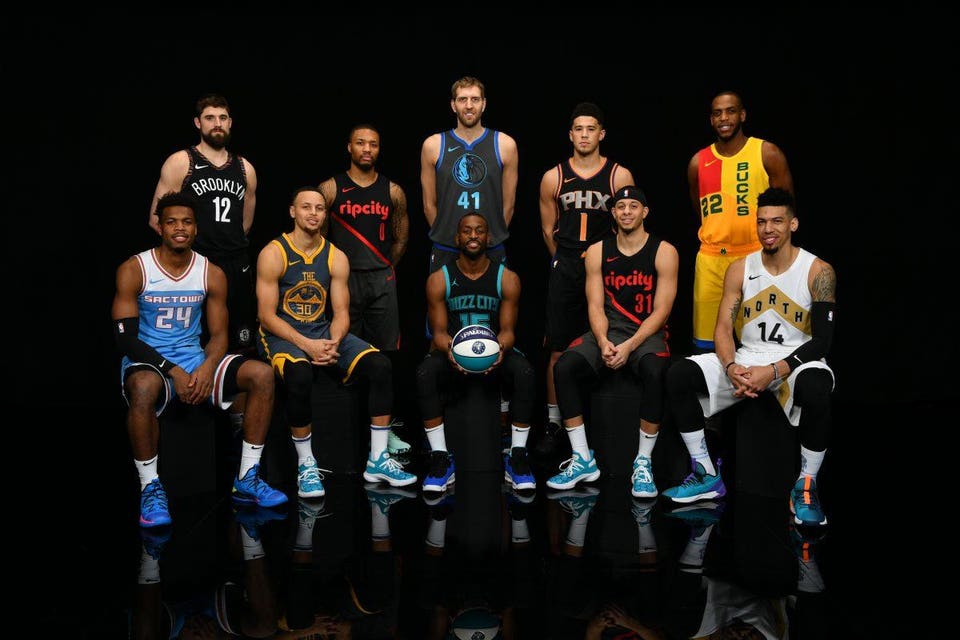 Her weakness is throws from the corners of the site and passes to the shield along the front line.
Her weakness is throws from the corners of the site and passes to the shield along the front line.
#1 - the fastest defender, running into the gap in every possible situation, #2 and #3 - mobile, jumping players, #5 - center, #4 - the fastest winger, able to move into the corners of the court.
Zone defense 3-2
#1, #2 and #3 are aggressive, mobile players, the success of the whole system largely depends on their activity. All three are focused on intercepting the ball and counterattacking. This system is most acceptable against teams seeking to attack from a distance, and less suitable against strong centers. The 3 second zone and 45 angle positions are the most vulnerable. #1 is in charge of the foul line. #2 and #3 are in a rebound fight. #5 and #4 are the first and second centers.
Zone protection 2-3
Strongest under the backboard, in the corners of the court along the front line. It is used against a tall, powerful team attacking from close positions and from under the shield. Often used for group selection of the ball in the corners of the court. When interacting #4 and #2 or #3 and #1, the defense is less effective on the foul line and at a 45 angle. #5 - center, #4 - second center, #3 - winger, #1 and #2 - defenders, constantly aimed at interception and counterattack.
Often used for group selection of the ball in the corners of the court. When interacting #4 and #2 or #3 and #1, the defense is less effective on the foul line and at a 45 angle. #5 - center, #4 - second center, #3 - winger, #1 and #2 - defenders, constantly aimed at interception and counterattack.
Zone protection 2-2-1
This defense is used by agile and short teams aiming to intercept the ball and constantly counterattack. This zone counterattack is used against teams seeking to attack from medium distances. Center #5 is responsible for rebounding, wingers #3 and #4 are responsible for positions in corners and under 45 , rebounding the ball and for the foul line.
Defenders #1 and #2 tend to close the passes to the shield and into the three-second zone, while they themselves are constantly aimed at counterattacking.
A.Ya. GomelskyDefense against ball carrier
It is necessary to work out the correct body position in a basketball stance: the center of gravity is evenly distributed on both legs, but not on a full foot, but on toes, with a "charged" (ready for any movement) foot, knees slightly bent, legs slightly wider than shoulders .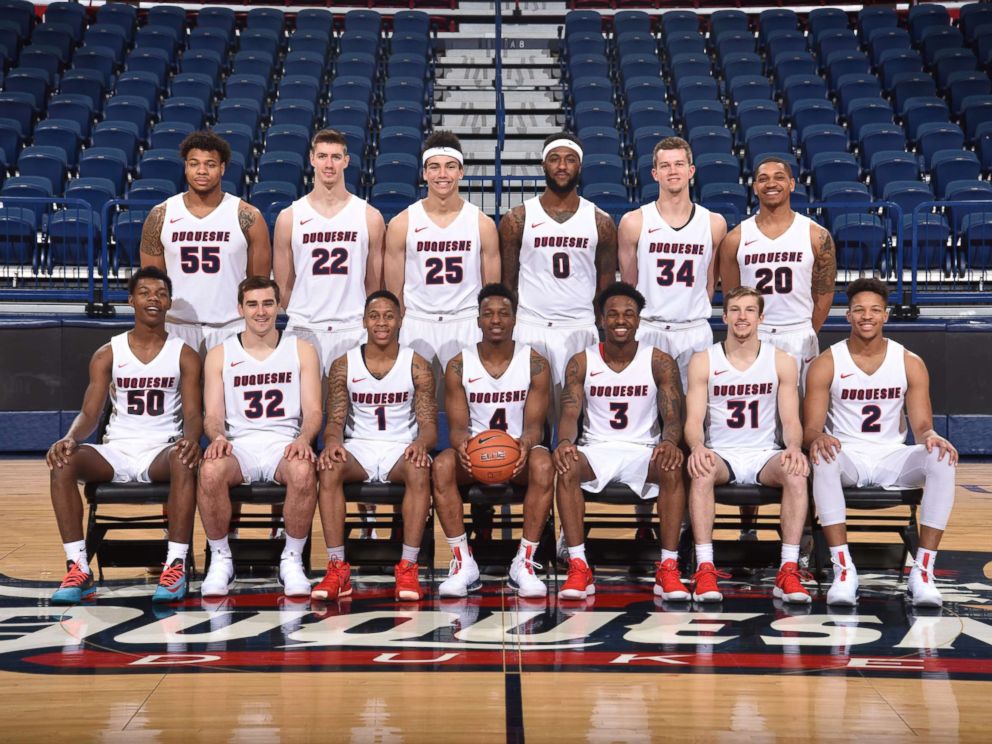 Boxing stance - like the great Michael Jordan.
Boxing stance - like the great Michael Jordan.
If the opponent is in possession of the ball, one arm of the defender must be directed at the ball and constantly attack the opponent, preventing him from aiming or throwing (best if it touches the attacker), and the second arm slightly pulled back. Many defenders, being between the player with the ball and the basket, even in the correct stance, do not actively use their hands, do not make an offensive movement towards the attacker, which allows the opponent to calmly take further actions. At the same time, it must be remembered that you cannot cross your legs, that the distance between the defender and the opponent must be calculated so that the opponent can pass with a dribbling to the ring.
Contact defense against the ball carrier, although difficult and somewhat risky, is modern and has its advantages. If your arm extended to the opponent reaches his chest, then by doing so you prevent the attacker from lifting the ball up for a throw.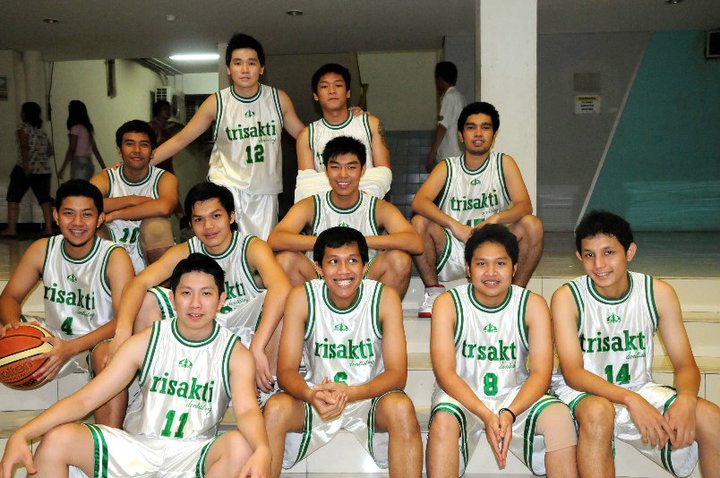
Defender's movements should be trained regularly:
a) in each training session - with and without resistance;
b) with one or two balls;
c) with side steps, making contact with the body closest to the attacker.
The defender's actions in different situations can be divided into 12 positions:
1. Defense against a dribbler driving the ball to your ring.
2. Defending against a player who has finished the dribble and is looking to either shoot or pass.
3. Defense against an attacker 5-6 m from the backboard, but not using the dribble.
4. Actions of defenders in numerical minority.
5. Actions of two defenders against three forwards.
6. Actions of three defenders against four forwards.
7. Actions of defenders during screenings.
8. Rear screen protection.
9. Slip protection.
10. Group ball tackle by two defenders.
11. Defense against the first pass to the counterattack.
12. Fighting the attacker in the corners of the court.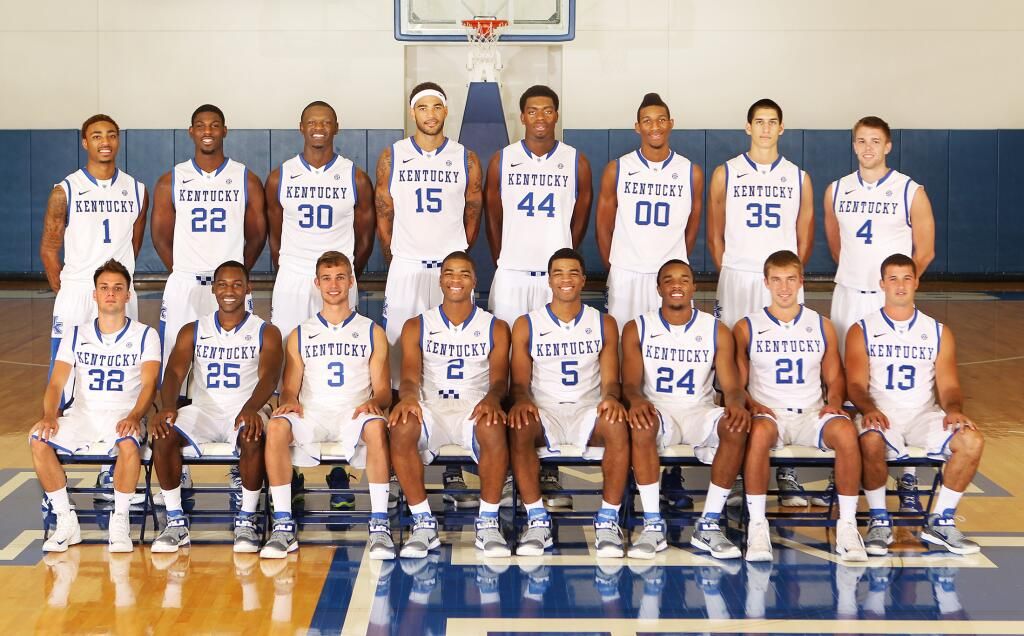
Let's try to analyze the defender's actions in each of these positions.
1. Defender's task - in a parallel low stance, without crossing the legs, move backwards, knees slightly bent, one hand all the time makes attacking movements towards the dribbler (feints with the body and head participate in this frightening dribbler movement), with the other hand he tries to stop the dribble (if possible, knock the ball out). The raised hand is ready to prevent the presenter from making the pass. Hands can be changed, they are always in motion.
As already mentioned, one should move on a "charged" foot, the heels do not touch the floor, the back is straight, slightly tilted forward, the head is raised up.
The leader should be pushed to the sideline, in the corner of the court, or his movement should be directed towards the defensive partner, remembering that the leader must not be allowed to go to the "strong" side (if left-handed - to the left, if right-handed - to the right).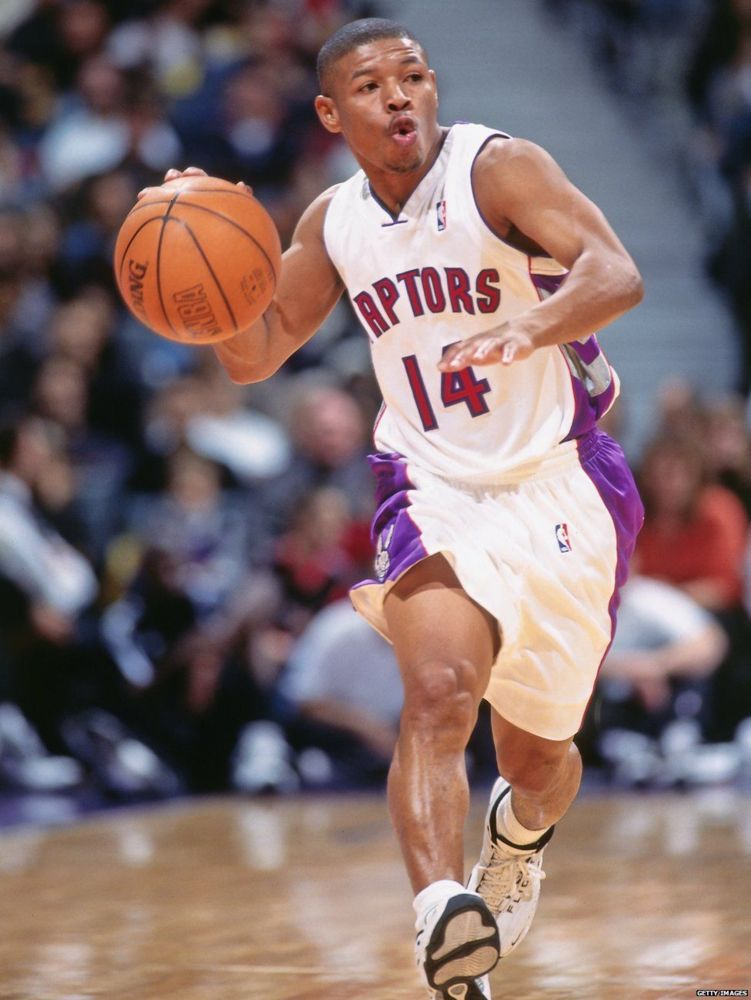
The distance from the leader should be maintained depending on the speed of his rushing with the ball, his ability to attack or pass, as well as your ability, taking into account the position on the field of defensive partners. Do not rush to take the ball away from a good dribbler, wait for him to stop or make a mistake.
2. If the attacker has finished dribbling and has stopped to shoot or pass the ball, the defender must definitely get close to him, actively using his arms, preventing him from concentrating on the next action. The hand closest to the opponent must touch the fingers of his chest or stomach and not allow him to lift the ball up to attack the ring or pass. The defender seeks to force the opponent to turn his back to the shield and, without stopping attacking the attacker, prevents him from making an aimed pass. The defender must signal to his defensive partners to be ready to intercept the ball. These are already team actions.
3. If the opponent has received the ball 5-6 m from the backboard and he is in possession of the dribble, the defender must not stop actively attacking the attacker; make short lunges with your front foot, use your hands to prevent him from aiming. The attacker cannot be missed to the shield along the front line, if he moves slightly towards it, none of the partners will help the defender. The hand close to the end line insures the passage with the lead, the other one attacks the attacker.
The attacker cannot be missed to the shield along the front line, if he moves slightly towards it, none of the partners will help the defender. The hand close to the end line insures the passage with the lead, the other one attacks the attacker.
Do not give in to feints. If the attacker went to the end line where the defender took up position, you can meet him with his chest and show the referees that he knocked you down. Don't be afraid and learn to fall gently on your back.
If the attacker, despite the activity of the defender, lifted the ball for a throw, you should try to jump with him and prevent the throw. Do not stop working even when the opponent has already made a throw or pass. Do not turn away from him and block his path to the shield. When you take a step back, meet him with your face, and do not try to run after him. You should always be in these moments between the opponent and your shield.
4. If the defender is alone against two attackers, he tries to prevent the ball from being thrown from under the backboard and retreats with his back to his ring so that he can see both attackers.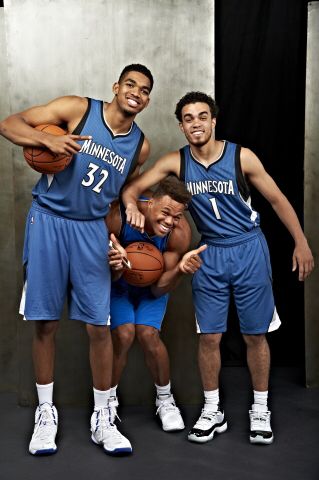 With false movements, he tries to stop the player with the ball and prevent him from making a pass to the opponent under the ring or in time for him in order to block the throw from afar. Not allowing the ball to be thrown from under the shield, the defender will fulfill his mission.
With false movements, he tries to stop the player with the ball and prevent him from making a pass to the opponent under the ring or in time for him in order to block the throw from afar. Not allowing the ball to be thrown from under the shield, the defender will fulfill his mission.
2x1 training on the spot and on the move develops reaction in defenders, teaches active arm movement, backward movement, composure and ability to intercept the ball.
5. Two defenders against three forwards - a common situation in any match, so the defenders, regardless of their position, being in the minority, must know their maneuver.
The front defender moves towards the dribbler to stop him at the top of the three-point offensive zone. He uses a feint, showing that making contact with this attacker is his main real task. At the same time, he should not get close to the opponent leading the ball. The rear defensive player takes a position on the free throw line, behind the front one and, after the pass from the dribbler, moves towards the player who received the ball - he is responsible for passing this player to the backboard or throwing from close range. The front defender, meanwhile, quickly moves to the third striker under the shield, managing to prevent him from getting the ball. The task of the two defenders is to prevent the ball from being thrown from under the shield. Exercises 3x2, 4x3, 5x4 are a good school for practicing such actions. You can train them by attacking with two balls.
The front defender, meanwhile, quickly moves to the third striker under the shield, managing to prevent him from getting the ball. The task of the two defenders is to prevent the ball from being thrown from under the shield. Exercises 3x2, 4x3, 5x4 are a good school for practicing such actions. You can train them by attacking with two balls.
6. If three defenders are defending against four attackers, their actions are built as follows. If attacker XI has the ball, defender ?1 rushes towards him, defender ?2 is responsible for throwing and moving to attacker XZ's shield, defender ?3 moves to the shield. If attacker X2 receives the ball, defender ?1 tends to it. Defender ?3 is responsible for attacker X4, defender ?2 moves to the basket.
A 4x3 drill on the spot and on the move, with rebounding the ball after a throw, with one and two balls - a good rehearsal for a defense of three against four.
7. Today, not a single even very serious team imagines an attack without a combination of screens./cdn.vox-cdn.com/uploads/chorus_asset/file/19934730/2c419a7e8c4dd3c549eeed8d92e0b079__tracy_mcgrady_nba_stars.jpg)
Coordination of actions of the team's defenders, warning about the impending screen determine the preparation of the team to fight the screens.
The guard guarding the screening player must warn his partner of the imminent threat. If the screen without the ball is made by attackers of the same height, there is no great danger of changing the defenders.
If the defenders want to avoid changing when screening from the side, the defender must turn towards the defender and step back, bypassing him from behind, which will not allow the attacker to pass to the backboard.
If the attacker screens from the blind side, from behind, the defender must open towards the defensive partner, turning sideways to him. This will make it difficult to set up a barrier.
8. If your partner puts a screen on the sniper when attacking from medium or long distances behind the defender and you did not have time to get out from under such a screen, a change is necessary: your partner switches to the sniper with his hand raised and prevents him from making a throw. You are left with a dangerous, taller opponent, and your task is to prevent him from getting the ball or picking up the ball after the throw.
You are left with a dangerous, taller opponent, and your task is to prevent him from getting the ball or picking up the ball after the throw.
It is difficult to do without the help of partners in this situation. In general, I am a supporter of the smallest shift with screens, because. this reduces individual responsibility and gives the attacker a chance to beat the defender.
9. If your player, while in possession of the ball, seeks to pass to a teammate who is close to him, you must step back and allow your defensive partner to slip, and then take an active position towards your attacker.
10. The defensive player should always try to get the dribbler to the touchline, into the corner of the court, stop him and turn his back to the backboard.
The second defender, seeing this situation, attacks the opponent with the ball from the other side. Both of them with active hand movements interfere with making an aimed pass. It is important that the rest of the defense players are ready, focused on intercepting the ball.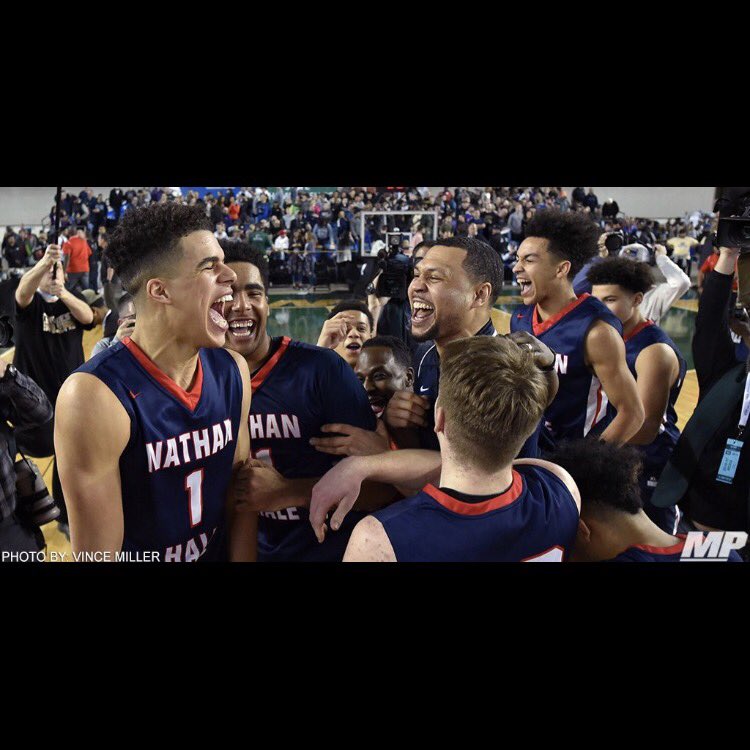
11. The USSR national team used the defense against the first pass in a fast break more than once against opponents who counterattack through a fast dribbler, sending him the first pass after picking up the ball from the backboard. So we often defended against the Spanish national team, where the ?1 dribbler was Carbolan or Salosobal.
Our team's tall center, who plays close to the backboard, whether it's Tkachenko, Sabonis or Belostenny, prevents the dribbler from making an accurate first pass. At the same time, our fast defender, for example, Homichujus, presses ?1 opponent and does not allow him to receive the ball. The other three of our players were to immediately return to their zone.
So often the counterattack of the Spanish national team failed, in which the Spaniards were especially dangerous and productive.
I must say that there are some significant differences between the game of our and American defenders. According to my conclusions, they are:
1. Americans on the defensive are always offensive, they are not afraid of a contact attack on the attacker in possession of the ball.
Americans on the defensive are always offensive, they are not afraid of a contact attack on the attacker in possession of the ball.
In a low stance with arms raised, the US defender seeks to hit the ball, prevent a pass from being made, not to mention a shot. If the attacker lifts the ball up, the defender immediately reacts to this: his hand rises up and seeks to interfere with any actions of the attacker. The attacker put the ball down - the defender immediately takes two quick steps back, preparing to prevent the opponent's pass without losing his defensive stance.
2. When active, the American defender never allows the attacker to pass with the ball through the center, into the middle, but constantly pushes him to the sideline. When an attacker is missed on the front line, teammates immediately come to the aid of the defender. Our tactic is, on the contrary, to close the baseline, where, as we believe, it is more difficult to provide team assistance. I think it's best to find a compromise here: train the safety net both in the middle of the three-second zone and when passing on the front.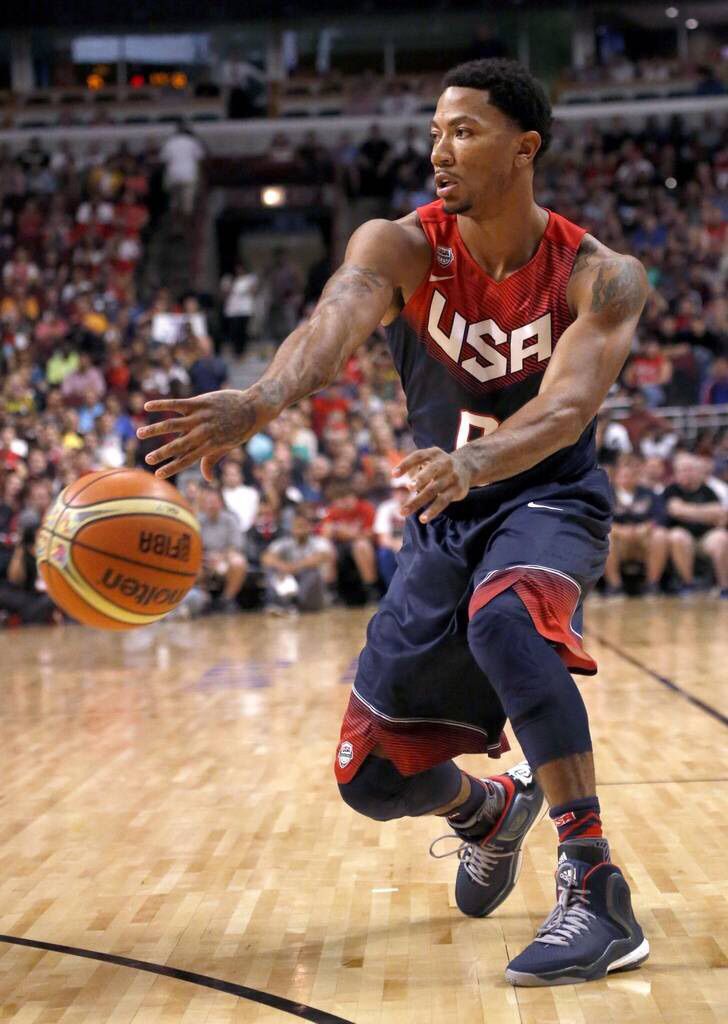 And in games, take into account the characteristics of attackers under guard, do not let them go in their favorite directions (left hand, favorite throw point, feints, etc.).
And in games, take into account the characteristics of attackers under guard, do not let them go in their favorite directions (left hand, favorite throw point, feints, etc.).
3. When screening, the American defender's first impulse is to pass behind his player. With a quick movement of the foot close to the screener, he tries to get ahead of the screening and stay with his ward, and if this fails, a change of attacking players follows. This does not reduce activity.
Weak team, Personal graters and Minus morale / Sudo Null IT News
Spent half a day on the basketball court. A good warm-up, and, as the Americans say, “thought-provoking”. I want to share some observations - common, in my opinion, for team sports and team development.
Observation 1: WEAK TEAM
The formation of a team of unfamiliar and unfamiliar players on the site is happening rapidly. We crashed three-on-three, more or less fairly in terms of height, in terms of the level of play, and off we went.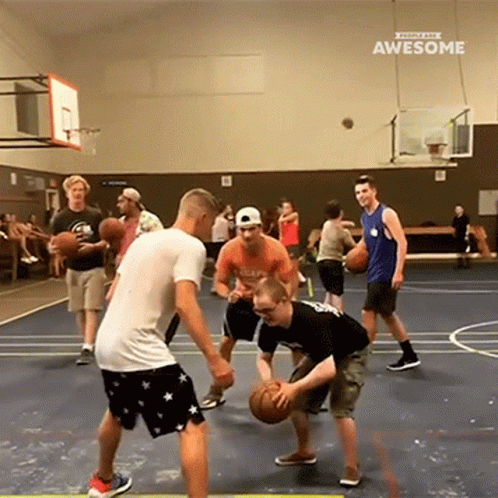 If after a couple of minutes you realize that you are in a weak team, it is difficult to enjoy the game.
If after a couple of minutes you realize that you are in a weak team, it is difficult to enjoy the game.
Funny pattern: think "I'm on a weak team" instead of "we're a weak team". Moreover, regardless of their own level of play. It would seem that both are the formulation of a fact, but there is a nuance. I tried to repeat to myself several times, to observe the sensations:
- I'm on a weak team, I'm on a weak team… I'm on a weak team. It feels like something like: “I am my poor thing,” such an injustice happened to me, what can you do.
- We are a weak team, we are a weak team... we are a weak team. At first, a similar annoyance, but with each repetition on the word “we” I start to wind up, a much more active reaction to, in fact, the same fact.
Conclusion:
There are no passive donors in the team. We can change a lot about the original “given” when we take responsibility for teamwork. Think “we” more often when you notice someone else’s or your own weakness.
Think “we” more often when you notice someone else’s or your own weakness.
Observation 2: PERSONAL GRATERS
Several times I observed this effect: you need to break into teams, but you really don’t want to get into the same team with that type. And of course, someday you will have to play with him, or even worse, program in pairs. How to be? Quit the game? Change project?
There is a belief that in a good team everyone should be friends, practically love their neighbor. But many virtuoso teams of athletes, scientists and musicians prove it false. If the task is the reason for the team, then only personal contribution is the reason to play together. Bank robbers gather in teams not for musical and gastronomic tastes, but for the benefit of the cause. In the vast majority of cases, we have something to appreciate even those people whom we do not like.
Output:
We like people who are like us, and the project benefits from people with different styles and skills.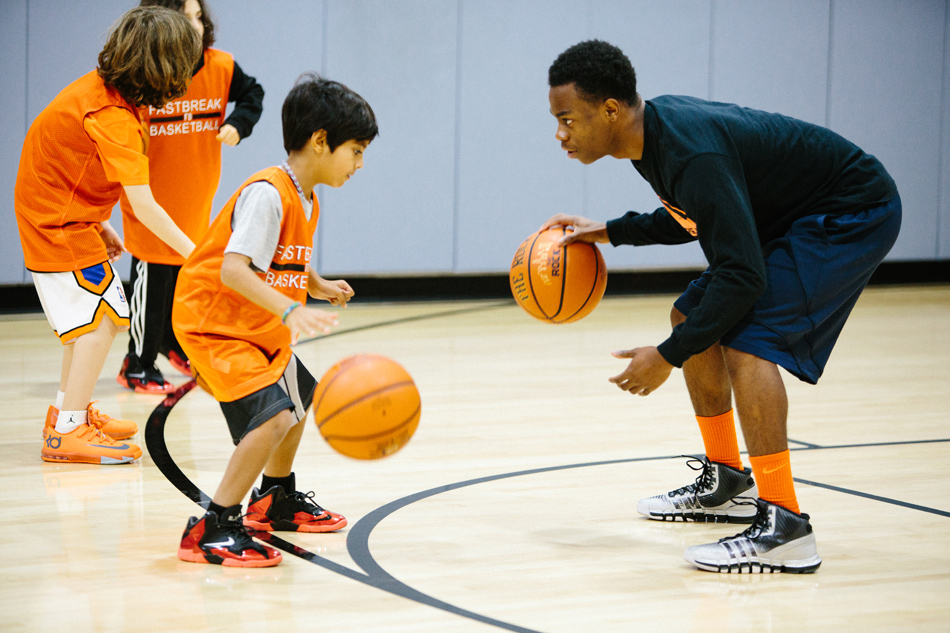 Look for reasons to work together instead of reasons to like each other.
Look for reasons to work together instead of reasons to like each other.
Observation 3: MINUS MORAL
Minus morality - this is how in sports and team games they call actions that undermine the morale of the team, endangering the results, health and even life of its members. Regardless of the technique of the game and the stellar composition, often teams that have not learned to recognize and get rid of such actions lose out to those that have strong team spirit and a sense of support.
The effect of minus morale may not be so obvious in the office, but it is perfectly observed on the sports ground. Often the dynamics of the game, and even the score, change radically when getting rid of a player who makes scathing comments and reproaches.
The job of an engineer is to solve problems for which there are no ready-made solutions. Technological expertise plays an important but far from decisive role. Fear of experimentation, inadmissibility of mistakes, criticism from technical leaders are social stoppers that block the flow of value creation.